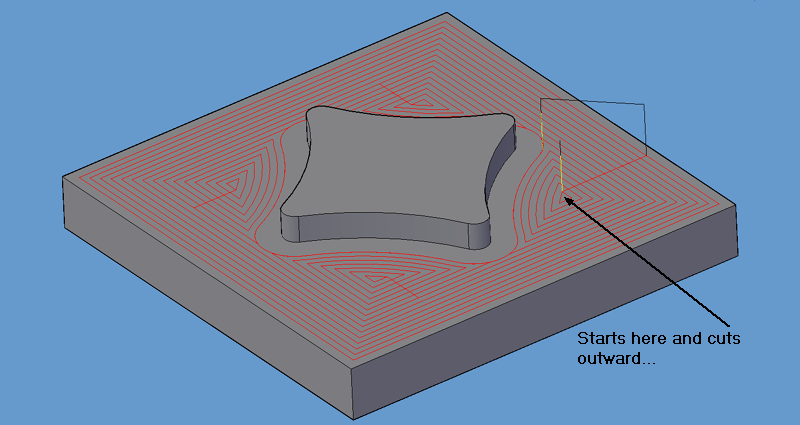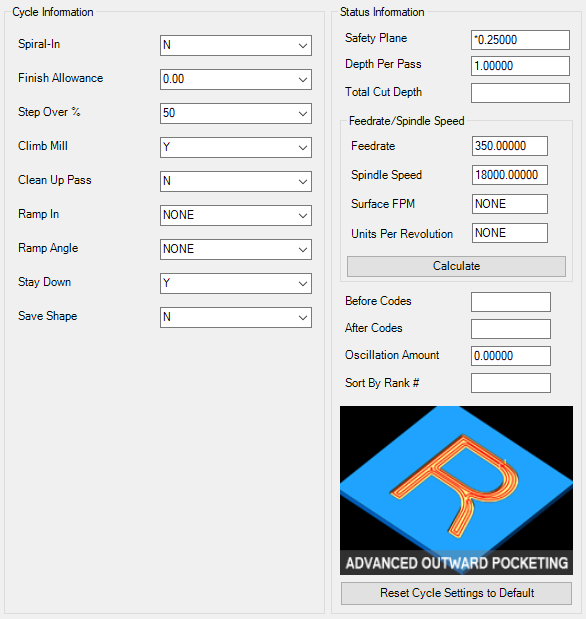|
This version of Advanced Pocketing uses a different algorithm and contains many options to control the creation of the tool path than the other pocketing cycles. This method allows for more complex geometry to be handed to the tool path generator.
The Advanced Inward Pocketing will start at a point inside the pocket and create offset tool paths, moving toward the outside of the pocket. There are parameters to allow a plunge start or a ramp start, and also options for keeping the tool down while in the pocket or allowing the tool to pick up and move to another area of the pocket to continue the shape.
Note: This cycle is only available on 64-bit Operating Systems. If you are running a 32-bit Operating System, you will be unable to use this cycle. |

Advanced Outward Tool Path

The following parameters effect the toolpath creation:
The value of 'N' defines that the cycle will start on the inside portion of the geometry and work its way to the outside of the geometry. To have it work from the outside of the geometry to the inside, select the cutting cycle 'Advanced Inward Pocketing'.
The value entered here will be added to Finish Pass above to provide material left for a clean up pass on the pocket with a separate tool.
This value is the percentage of the tool diameter between each pass of the tool in the pocket. This needs to be a real number such as 25.0 or 50.0.
The value represents if the cutting cycle will be doing Climb (CCW) milling <Y> or if you want the cutting cycle to do Conventional (CW) milling <N>.
A CleanUp Pass is described as an additional tool path that travels around geometry allowing you to use Cutter Compensation for the boundary of the geometry.
A Ramp-In set to <Y> will allow you to have the cutting cycle enter the cut with a ramp instead of a plunge. If this parameter is changed from the default of <N>, then the parameter of Ramp Angle will need to be defined in degrees.
If Ramp-IN is set to <Y>, then this parameter would need to be defined. The parameter will need a numeric value defining the degrees of the ramp such as 30 or 45.
**Changing values in the cycle parameters may yield unexpected results with some settings or on some geometry. Examine the toolpath and NC Code carefully before running your machine tool if you change these default settings.